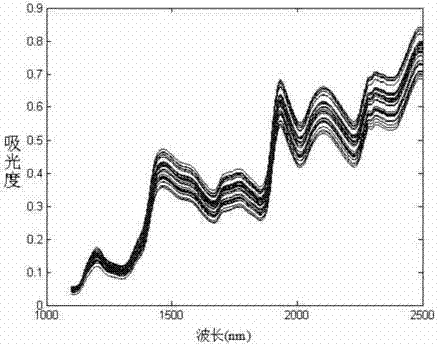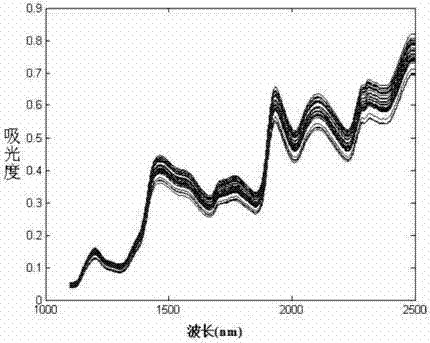Successive projection algorithm based near-infrared wavelength variable selecting method
A wavelength variable and projection algorithm technology, applied in the field of analytical chemistry, can solve problems such as low operating efficiency, high calculation time, and poor model robustness, and achieve the effect of scientific selection and dimensionality reduction
- Summary
- Abstract
- Description
- Claims
- Application Information
AI Technical Summary
Problems solved by technology
Method used
Image
Examples
Embodiment Construction
[0028] Specific embodiments of the present invention will be described in detail below in conjunction with the accompanying drawings.
[0029] First, preprocess the near-infrared spectrum to eliminate the noise caused by the signal drift of the instrument itself and environmental changes during the data acquisition process. The commonly used spectral preprocessing methods include SNV (Standard Orthogonal Transformation), OSC (Multiple Scattering Correction), wavelet Transformation, etc.; at the same time, the calibration set and prediction set samples can be divided, such as using the K-S algorithm based on Euclidean distance, the SPXY algorithm considering qualitative variables, etc.
[0030] Realize the flow chart of the present invention as figure 1 As shown, set the following parameters:
[0031] X(n×m): correction set spectrum array,
[0032] α: Threshold floating upper limit ratio, β: Threshold floating lower limit ratio, 0<β<1<α<2,
[0033] h: number of wavelength va...
PUM
 Login to View More
Login to View More Abstract
Description
Claims
Application Information
 Login to View More
Login to View More - R&D
- Intellectual Property
- Life Sciences
- Materials
- Tech Scout
- Unparalleled Data Quality
- Higher Quality Content
- 60% Fewer Hallucinations
Browse by: Latest US Patents, China's latest patents, Technical Efficacy Thesaurus, Application Domain, Technology Topic, Popular Technical Reports.
© 2025 PatSnap. All rights reserved.Legal|Privacy policy|Modern Slavery Act Transparency Statement|Sitemap|About US| Contact US: help@patsnap.com



